Pal Dardai has been named Hertha BSC‘s coach for the third time on a deal until the end of the season after Sandro Schwarz was relieved of his duties following a 5-2 defeat at Schalke some weeks ago. This defeat left the Old Lady rooted to the foot of the Bundesliga.
In his first stint in charge from February 2015 through the 2018/19 season, Dárdai mostly led Hertha to comfortable mid-table finishes. But he was dismissed at the time by then-general manager Michael Preetz, who was targeting European qualification as Hertha’s ambition grew following Windhorst’s investment. Those ambitions were never realised as Hertha instead became a regular relegation candidate amid turmoil on and off the field. Windhorst sold his stake to American backers ‘777 Partners’ in March.
The last two matches were lost to Bremen and Bayern Munich. Now, Hertha have four games left if they are to avoid a first top-flight relegation since 2012. Dardai continues their mission at home to Stuttgart (h), before taking on Cologne (a), Bochum (h) and Wolfsburg (a).
In this tactical analysis, we will figure out which tactics of Dardai’s are used to avoid relegation. Also in this analysis, in the form of a scout report, we will find a potential new club for Hertha BSC’s Lukebakio in the case of relegation.
Well-known system
Normally, a change of coach makes it difficult for professional teams to prepare for their opponents. With Hertha’s new coach Pal Dardai, however, the opponents know well what they are getting into. Dardai has already been on the Berlin sidelines twice. His tactical alignment in the games so far is reminiscent of Hertha’s more glorious days as in the past, Dardai has set up his team in a 4-2-3-1 which can switch to a 4-4-2 in defence.
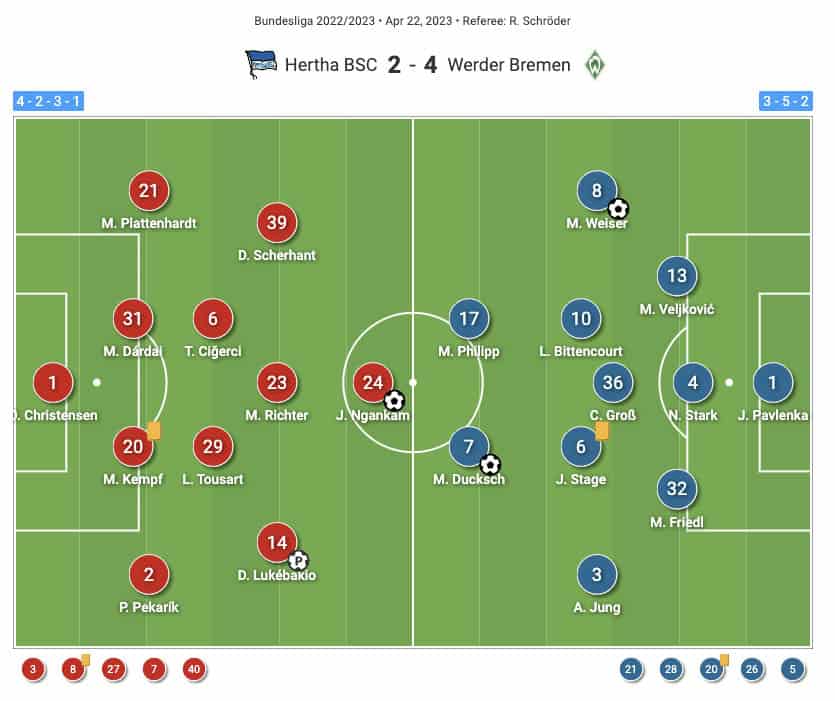
What is striking is the clearly distributed roles between a defensive ‘6’, a ’10’ acting farther forward, and an ‘8’ buzzing around in between. That is also typical of Dardai. Hertha tries to stretch out the pitch. The wingers move into the centre and offer themselves up front. The full-backs, on the other hand, play deeper. Hertha wants to find gaps on the wings and then play the ball behind the defence.
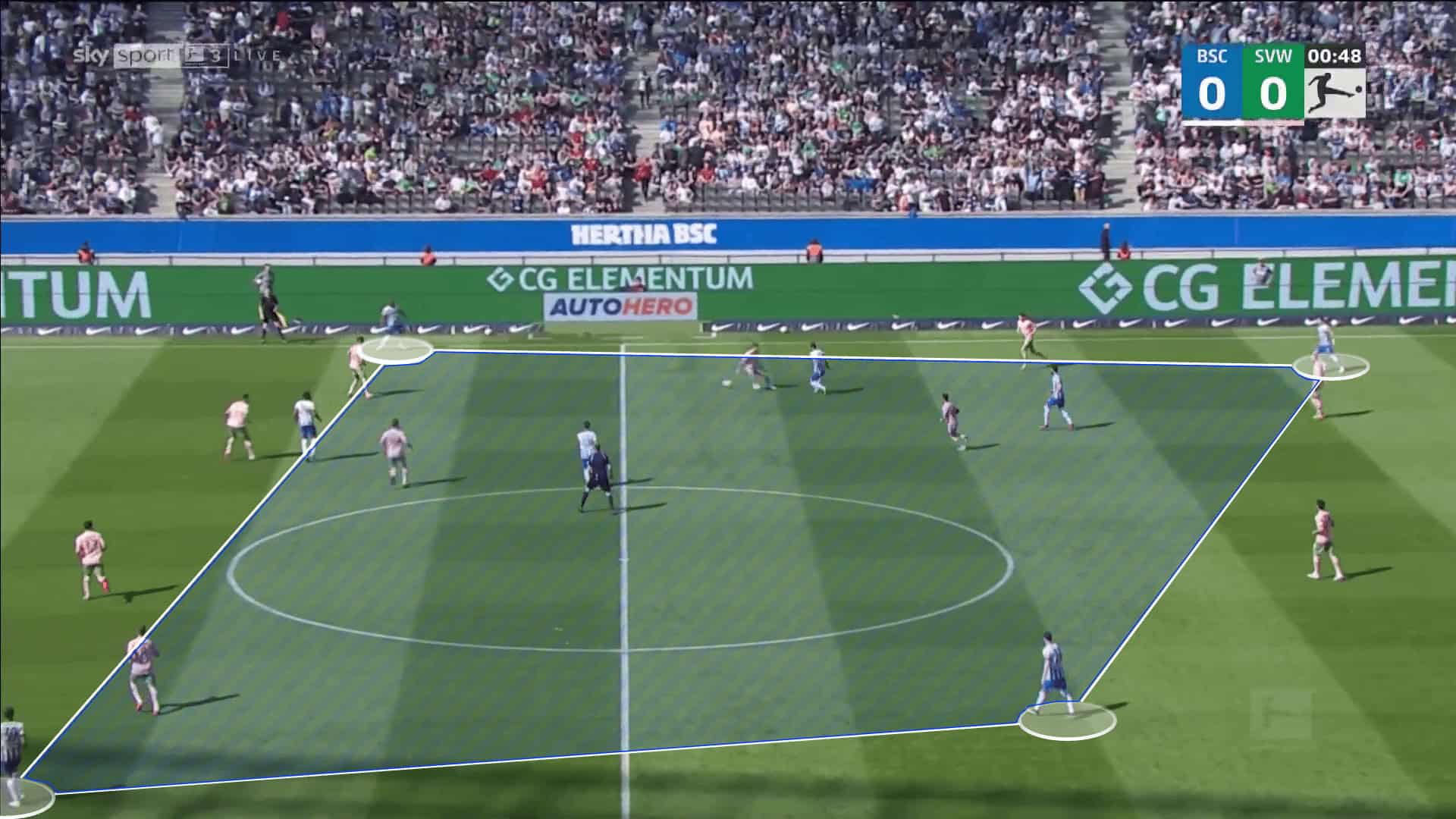
The defensive strategy of Hertha BSC’s 4-2-3-1 formation, while conservative, also has its drawbacks. Their reluctance to take risks and press the opposing team aggressively can lead to the opponents having a lot of possession of the ball in their own half. This allows the opposing team to take control of the game and dictate the pace of play, while Hertha BSC is forced to play a reactive style of defence.
Additionally, their attackers are not always pressing together, which can create gaps in their defence that the opposing team can exploit. This can lead to an overall lack of energy and intensity in their defensive play, allowing the opponents to break through with ease. As a result, Hertha BSC’s opponents have been able to dominate possession and create more scoring opportunities, despite Hertha’s conservative approach to defending.
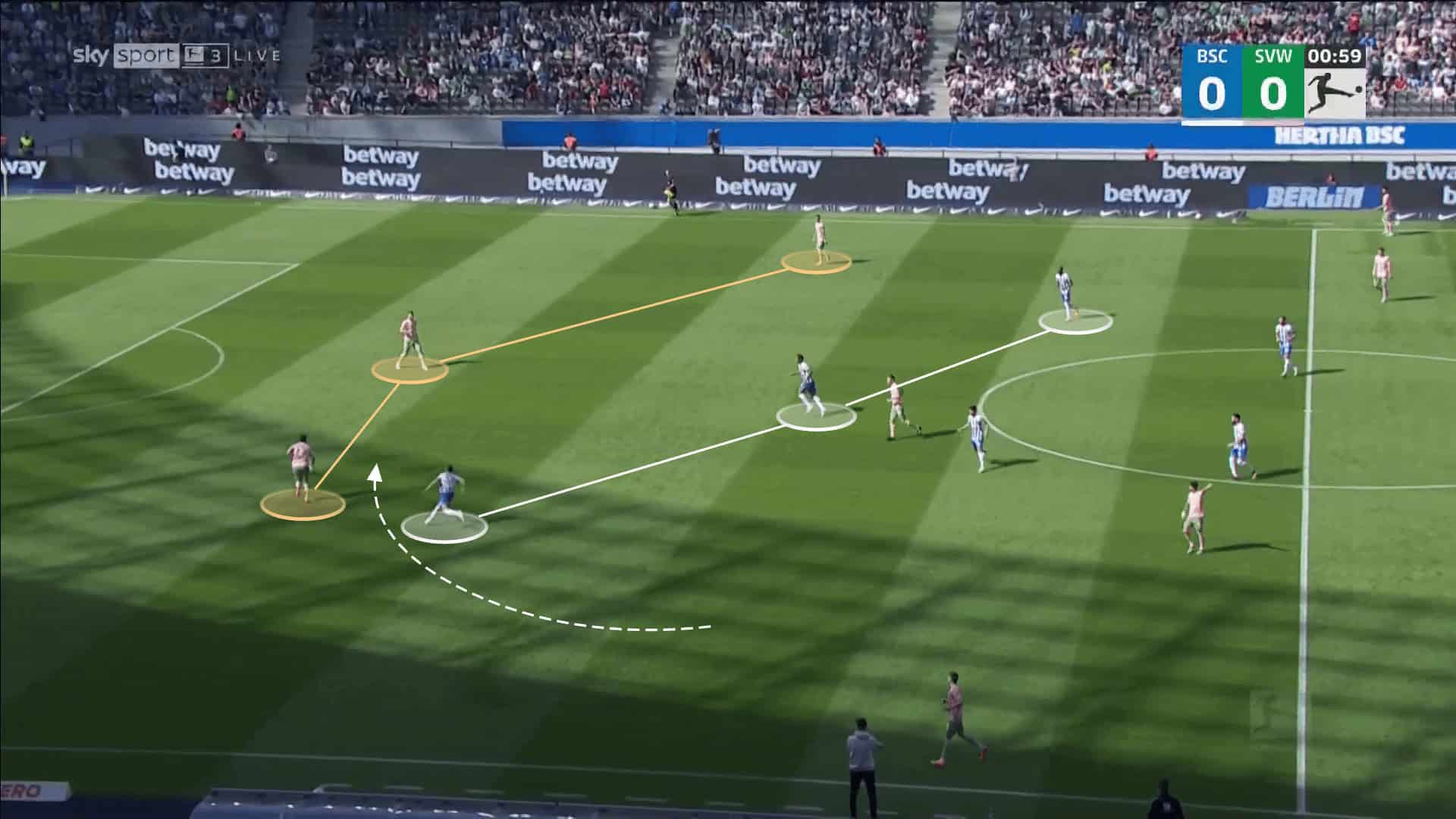
Offensively, an efficient but largely lacklustre performance is often enough for the opposition to break down the nervous Hertha defence. Hertha, for one, has great difficulty with passes into the interfaces between the full-backs and centre-backs.
Even if the opposing team’s offensive performance is not exceptional, Hertha’s defence is still vulnerable and prone to conceding goals. The defensive unit is not only lacking in confidence but also struggling with passes that split the interface between their full-backs and centre-backs.
This problem is concerning for Hertha because it makes it easier for the opposing team to penetrate their defence and create scoring opportunities. It also shows that Hertha’s defensive woes are not solely due to a lack of quality defenders but also tactical issues that need to be addressed.
Furthermore, Hertha’s defenders are not playing with the confidence required at this level of competition. This lack of confidence could stem from a variety of factors, such as poor communication, inadequate training, or a general lack of cohesion among the defensive unit.
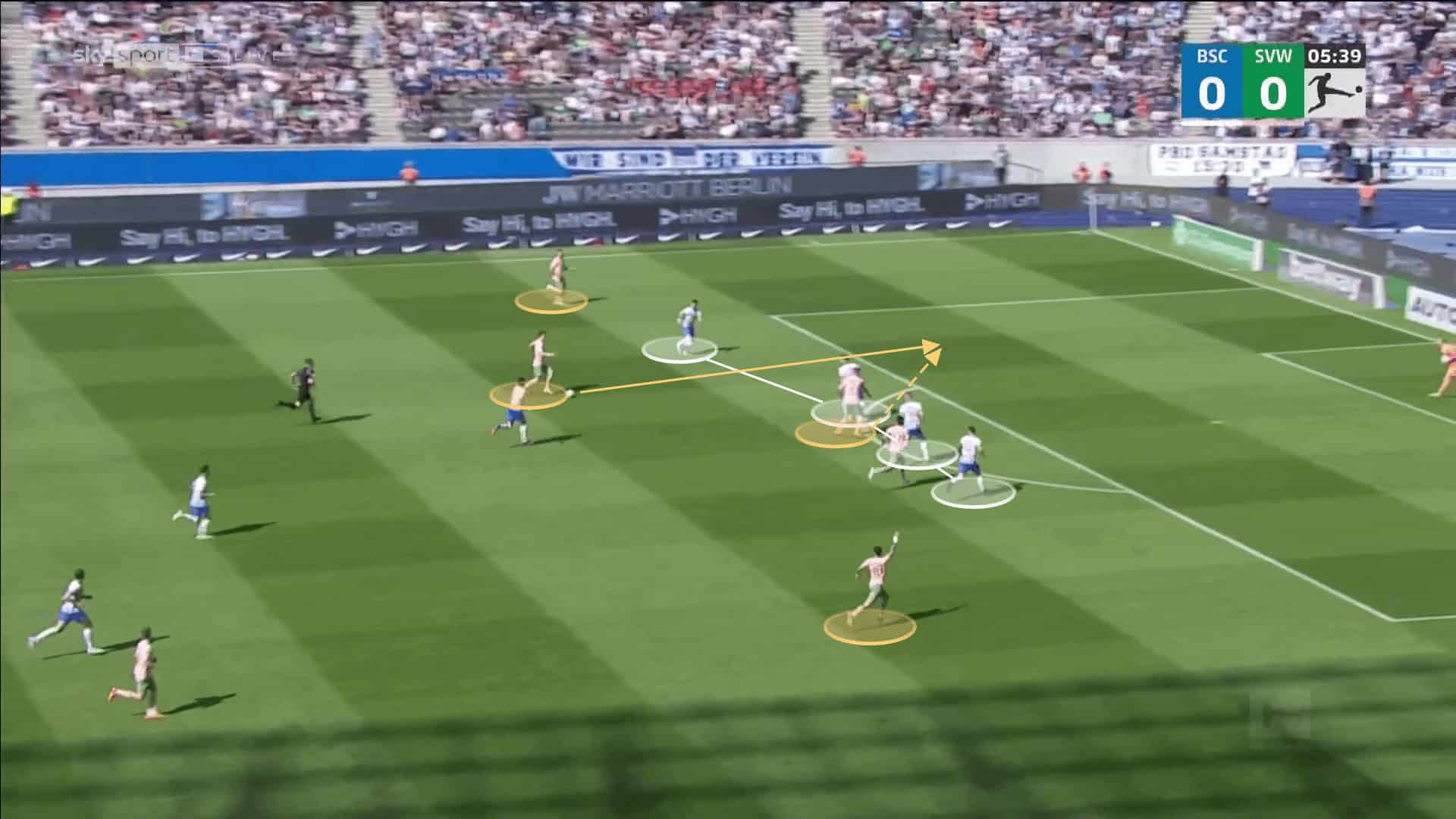
Defending crosses is a critical aspect of any team’s defensive tactics, as a failure to do so can result in conceding goals. In Hertha’s case, their back four struggles to defend crosses to the second post effectively. Their movement towards the ball is too wide, which means that there is always an opponent who is unmarked at the second post.
This is problematic for the defending team because it creates a numerical disadvantage in the box, allowing the attacking team to have more options and space to score a goal. Moreover, it also indicates a lack of communication and coordination among Hertha’s defenders, which can lead to confusion and mistakes.
If the opposing team is aware of this weakness in Hertha’s defence, they can exploit it by focusing their attacks on the flanks and delivering crosses to the second post. This puts the Hertha in a vulnerable position, as they are forced to defend against multiple threats simultaneously.
To address this issue, Hertha’s defenders need to improve their positioning and movement in the box when defending crosses. They should prioritise marking the opposing team’s attackers and not leave them unmarked at the second post. Additionally, better communication and coordination among the defenders are necessary to prevent such vulnerabilities in their defence.
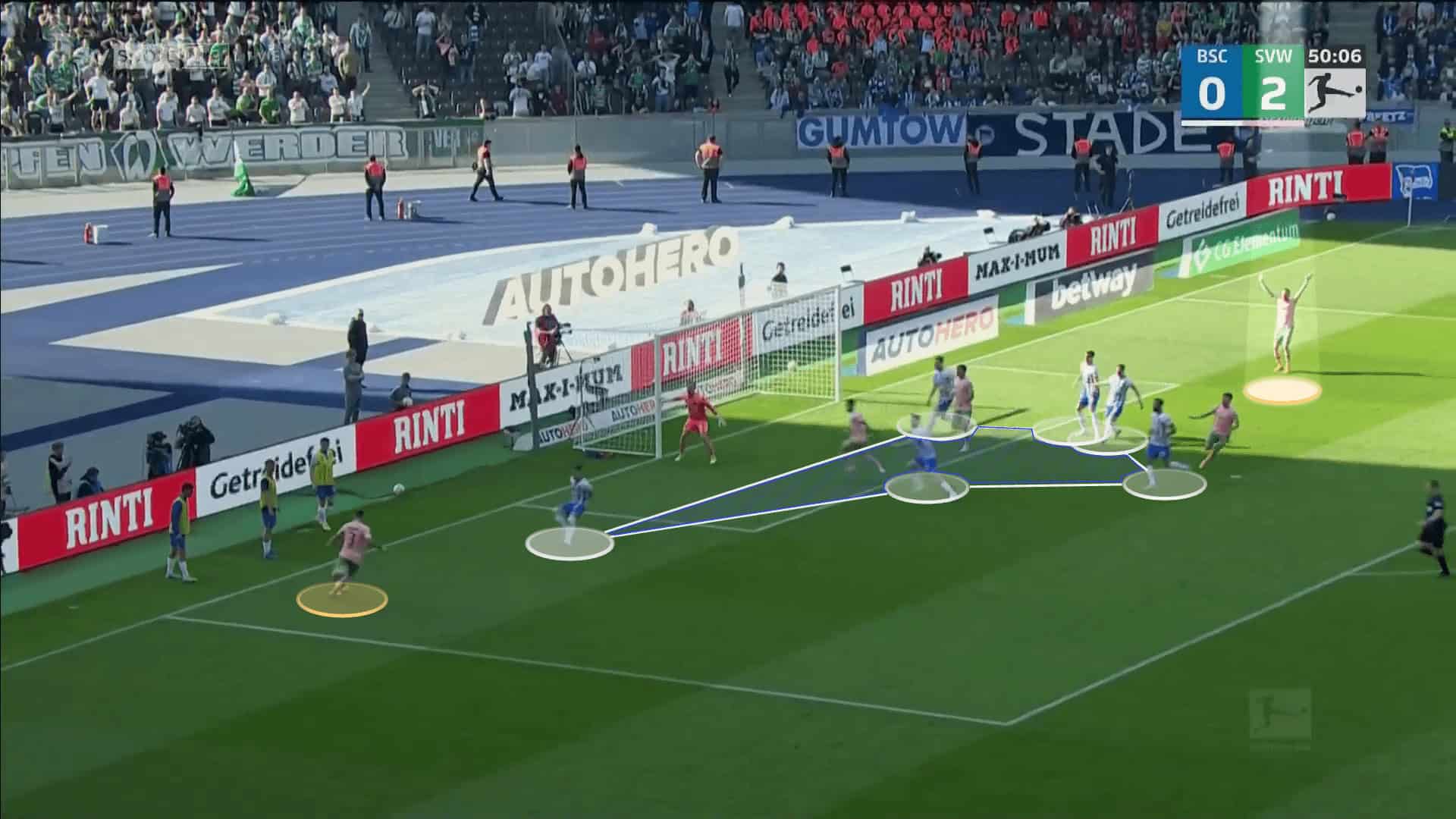
Experienced and well-known players such as Kevin-Prince Boateng have to bring momentum into the games. The often substituted ten-man Kevin-Prince Boateng demands the balls more often in central midfield. Hertha thus deliberately create overcrowds here – and only then find the gaps in the opposition’s defensive line. However, Boateng can no longer keep up at this level and pace over 90 minutes, so there is often a lack of creativity in midfield.
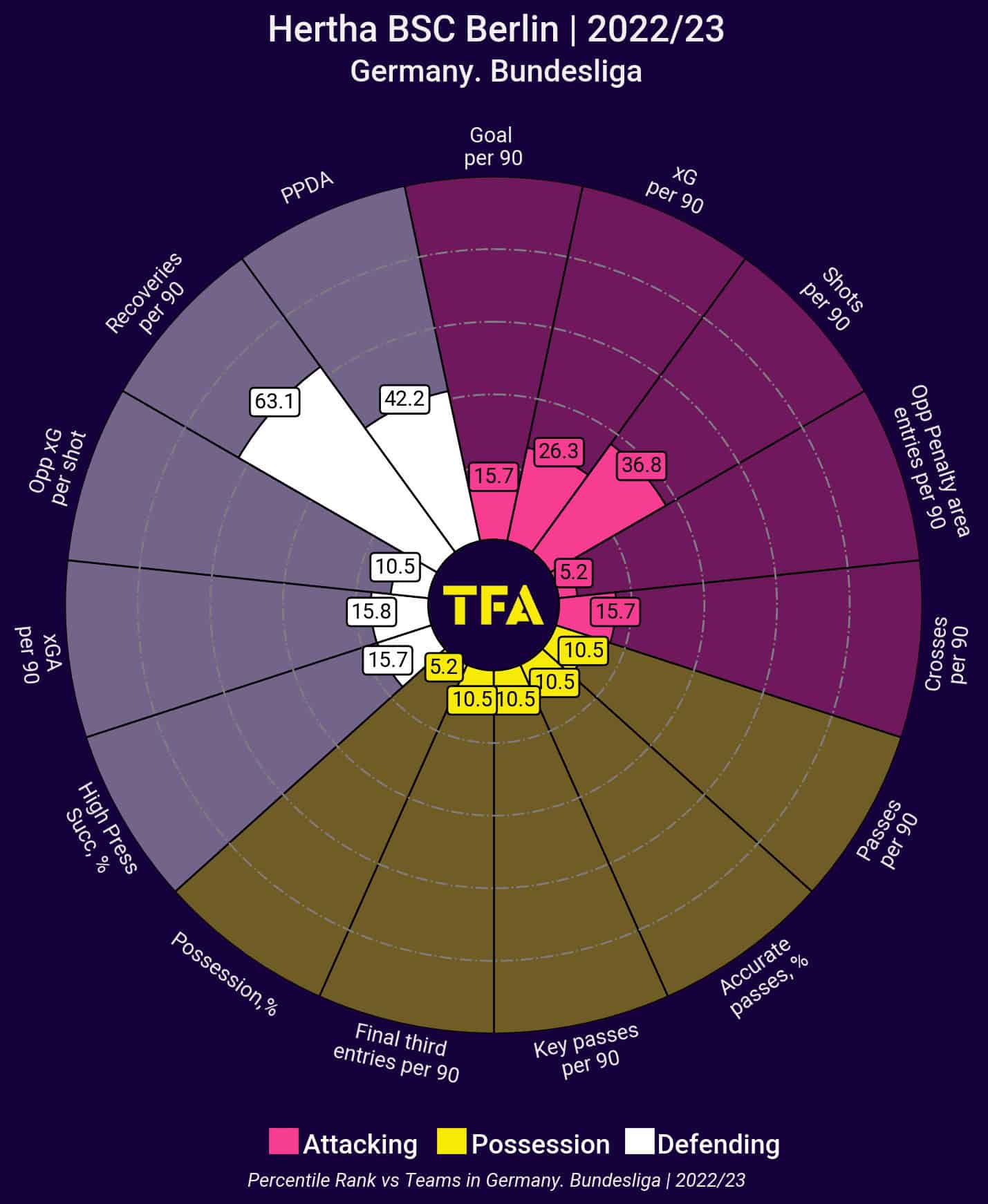
Therefore, hopes are too often pinned on winger Dodi Lukebakio, who can always cause a threat with his acceleration and speed. In case of a possible relegation, which is considered very likely, they will not be able to keep the Belgian at the club. Therefore, in the following section, we will analyse his style of play and a possible next step for him.
Player Profile
Dodi Lukebakio is an explosive winger who can play anywhere along the front line. His best role is playing as an inside forward. He likes to cut inside on his left foot to move to a more central attacking position, where he uses his speed and skill to take on defenders until he finds the space to make an attempt on goal. He is equally comfortable on both wings, and his all-action and energetic style make him a real handful for opposition defenders.
Lukebakio has great control with the ball at his feet and the ability to threaten from outside of the 18-yard box. His explosive speed and great dribbling skills make him a danger to any defence, and he is known for his “quick feet”, speed of movement and close control. He avoids using his weaker foot, preferring to use his left foot for almost all of his attacking play.
One of the downsides to Lukebakio’s style of play is that he gets fouled often due to his quick and elusive movements. However, he is not one to shy away from a challenge and his determination to succeed is evident in his performances on the field. Overall, Lukebakio is an exciting player to watch who is likely to leave the club in the summer.
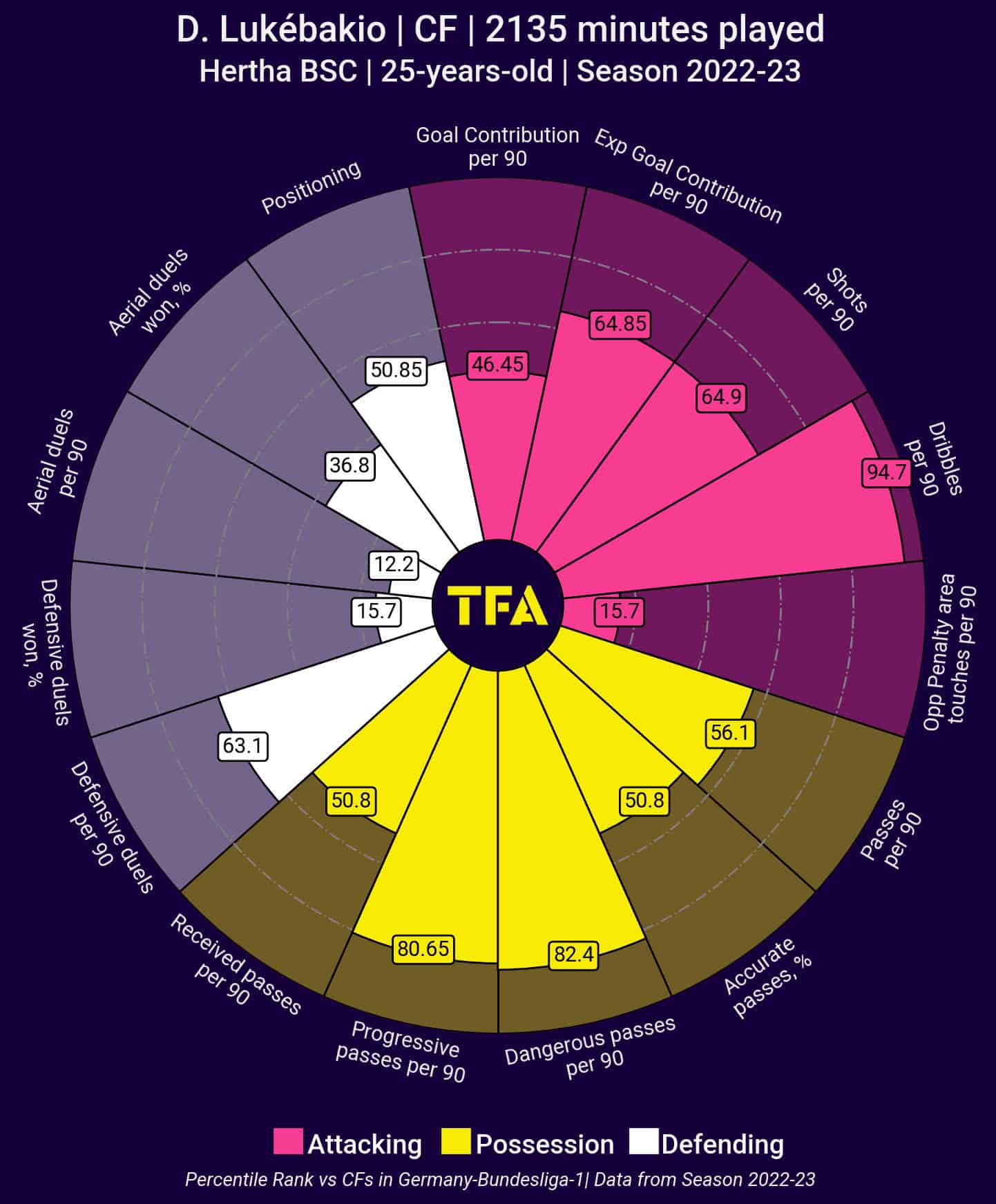
Lukebakio’s versatility allows him to serve as a long pass receiver when the ball is launched to the flank, using his size to dominate aerial duels against Bundesliga’s full-backs. He can also serve as a second ball winner when the ball is played to the wide area. In this situation, one of the midfielders would drift wide to win the aerial duel, and Lukebakio or a nearby teammate would attempt to win the second ball to continue Hertha’s attack.
When the ball is played to the target man, Lukebakio, as a winger, typically moves centrally to stand closer to the centre-forward. This movement is replicated by his attacking comrades, providing the striker with many lay-off options.
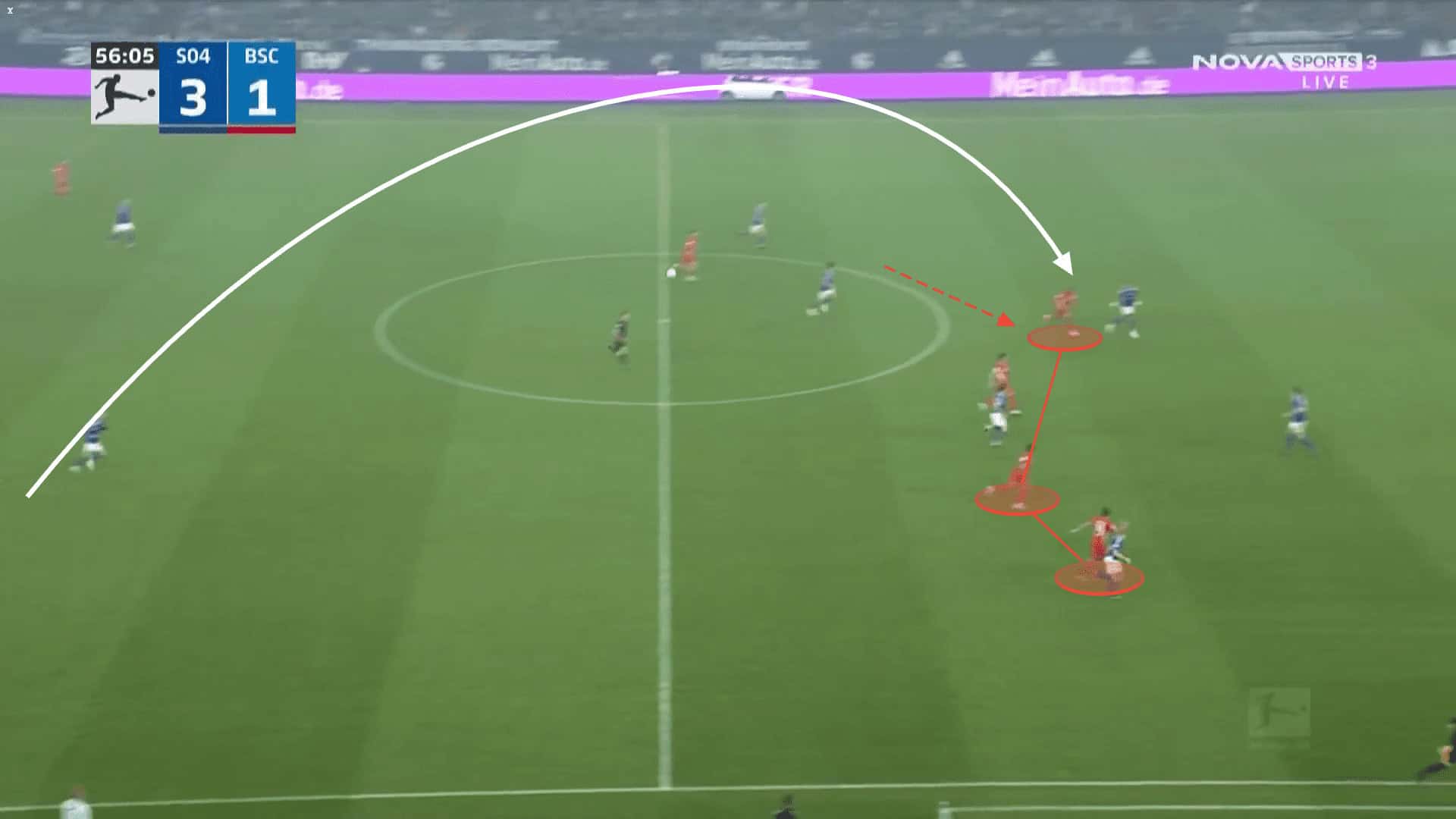
Thanks to his outstanding speed, Lukebakio thrives in both counterattacks and open play. During transitions, he typically drifts wide to provide width to Hertha’s counterattack before driving into the half-space to receive the ball.
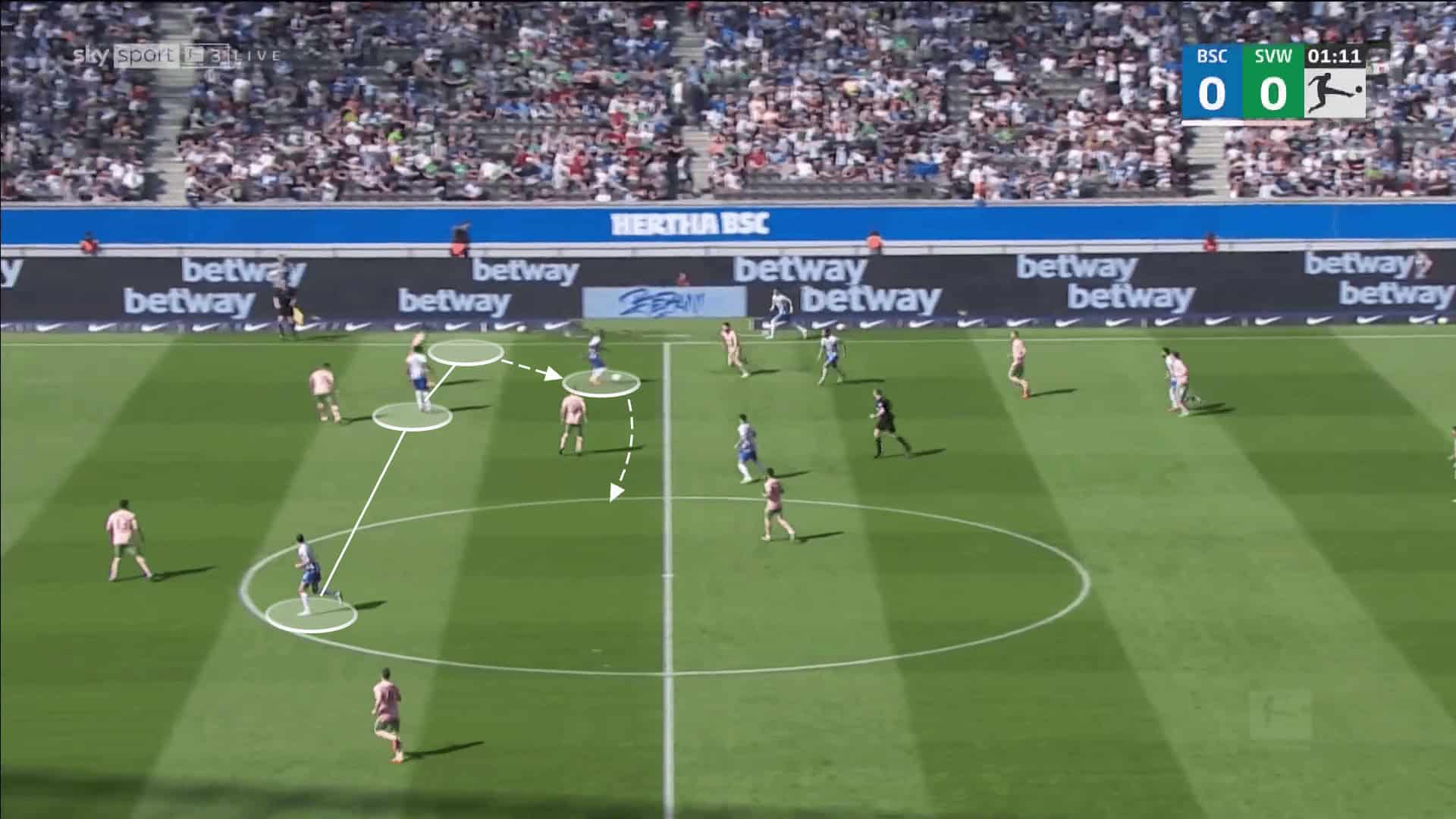
Lukebakio is a versatile attacker who not only finishes chances but also creates them for his teammates. He averages 1.6 key passes and 2.48 passes to the final third per 90 minutes in the Bundesliga. He often drops deep to link up with the midfielders and can also execute accurate switch passes to quickly change the point of attack. Lukebakio is skilled in sending all types of crosses, including hard-and-low balls and lofted crosses, with great accuracy.
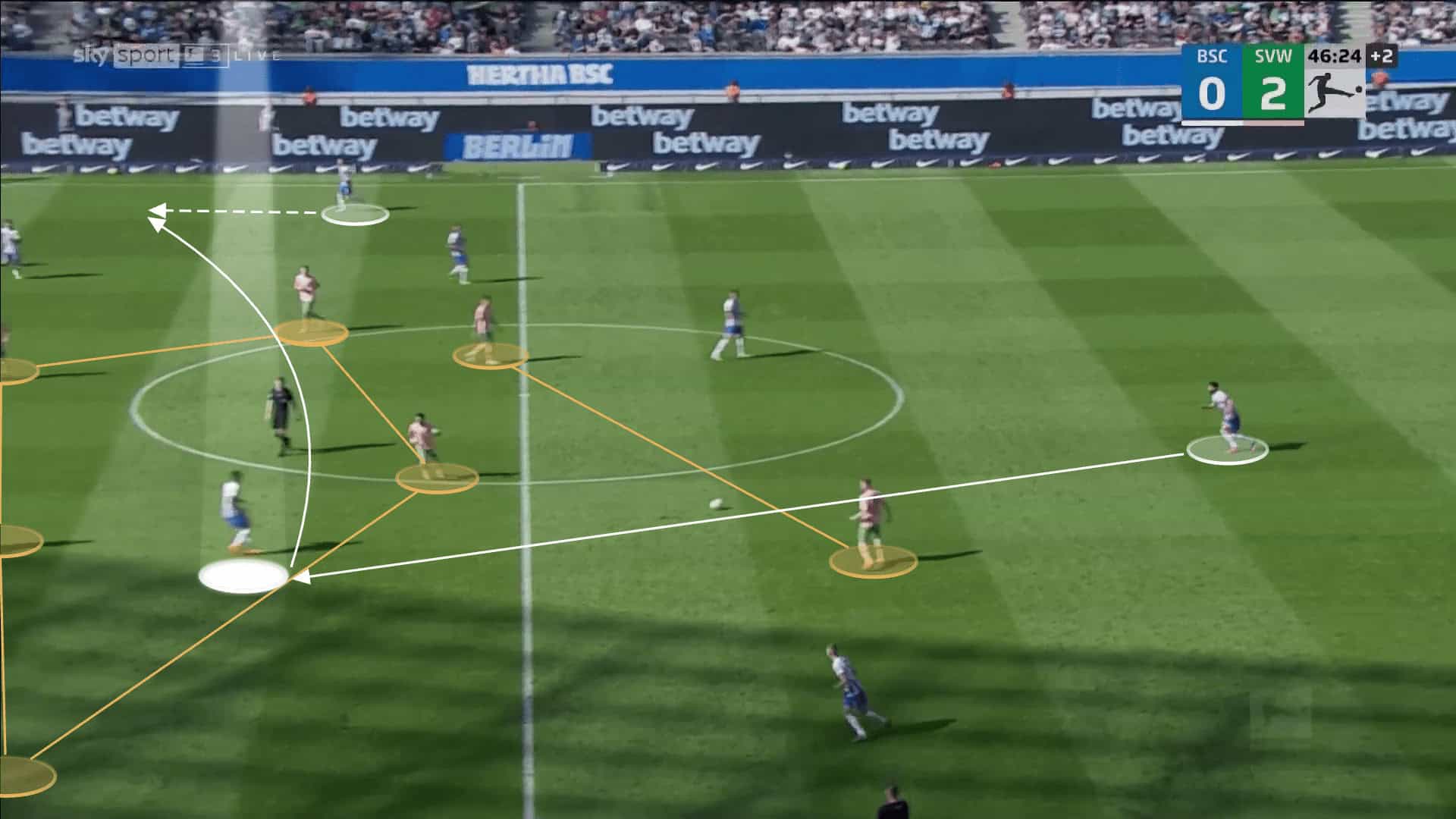
Although Lukebakio possesses versatility and explosiveness, there is still room for improvement in his game. As a winger, Lukebakio needs to improve his ability in one-on-one duels. Often, he appears confused when facing a defender and can be too passive in his dribbling, allowing opponents to outnumber him and regain possession.
Despite his considerable stature (187cm, 77kg), Lukebakio’s aerial statistics are subpar. He could enhance this by building upper-body muscle and improving his positioning and timing when engaging in such a duel.
Potential next step
Dodi Lukebakio is potentially on the radar of Atalanta Bergamo as his playing style has been found to be similar to that of Atalanta’s Ademola Lookman through our xGold algorithm.
Lookman is rumoured to be leaving in the summer, and with Rasmus Hojlund also set to depart, the Italian club is likely in the market for a new inside forward, and Lukebakio could fit the bill if Hertha Berlin were to be relegated and Atalanta qualify for European competition. Bergamo is playing in a 3-4-2-1 or 3-4-3 system. The wingers tend to push into the halfspaces and are free to roam the pitch – a philosophy that suits Lukebakio’s playing style.
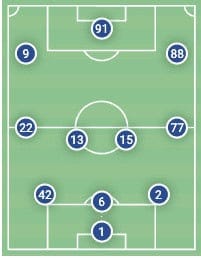
While Lookman is currently having a brilliant season and is considered a more complete player, Lukebakio has the potential to excel in a similar role. Both players tend to make a high number of dangerous and progressive passes, but Lukebakio needs to improve the number of accurate passes and touches in the box, even though he attempts more dribbles and aerial duels.
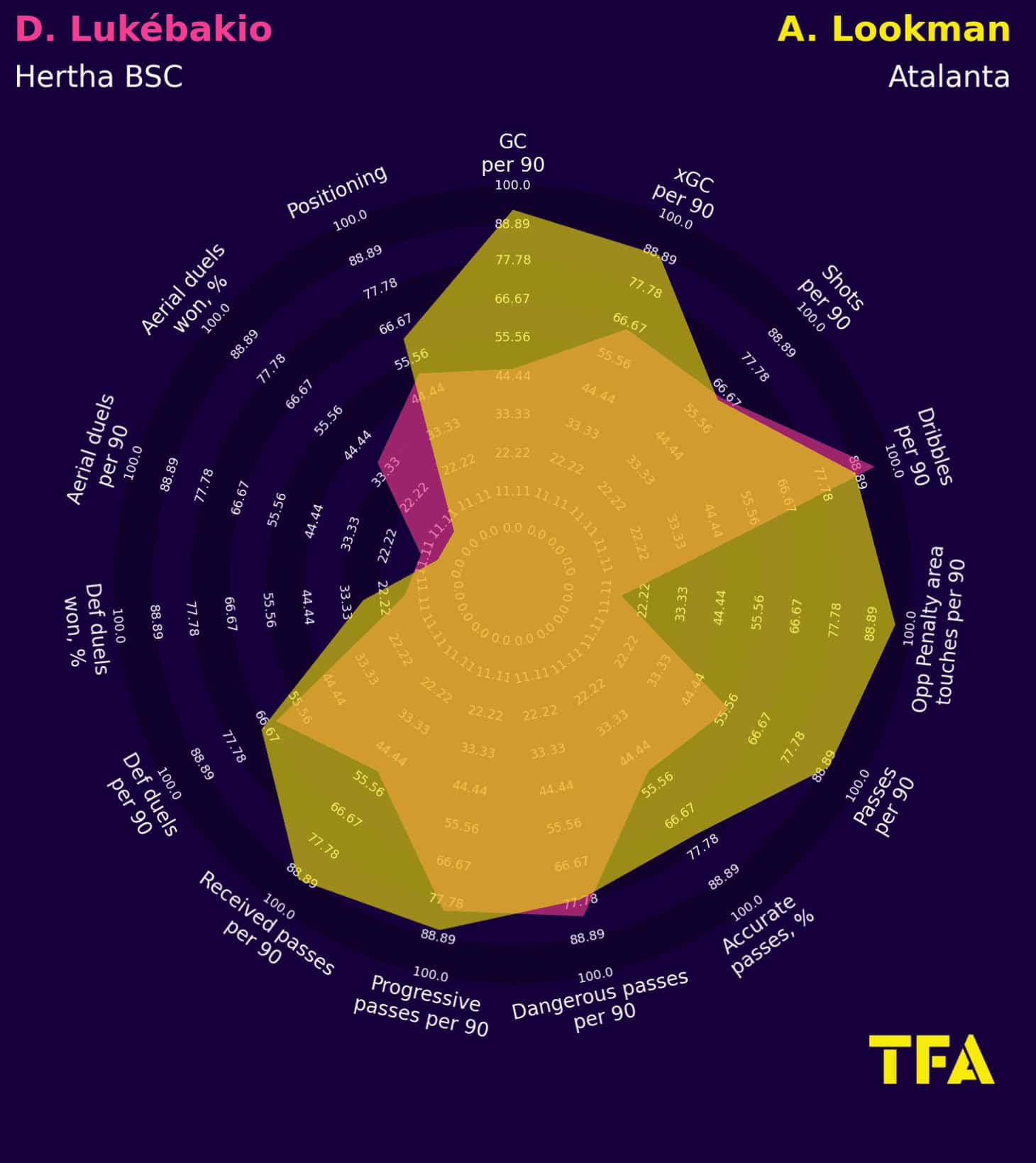
Other players with a similar profile to Lukebakio are Leon Bailey of Aston Villa, Christian Kouame of Fiorentina, and Alexandre Lacazette of Olympique Lyonnais, and if any of these players leave their club in the summer, Lukebakio could be the ideal replacement.
Conclusion
It appears highly probable that Hertha BSC will face relegation from the Bundesliga this season due to significant internal issues within the club. Despite the arrival of new coach Pal Dardai, it seems unlikely that the team will manage to stay in the top division.
Furthermore, there are indications that Dodi Lukebakio, the club’s most valuable player, may depart in the summer transfer window. Although he has yet to fulfil his potential, he is likely to remain in one of Europe’s top five leagues, with the Italian Serie A being a promising destination. Atalanta is a leading contender to acquire the talented winger.





Comments